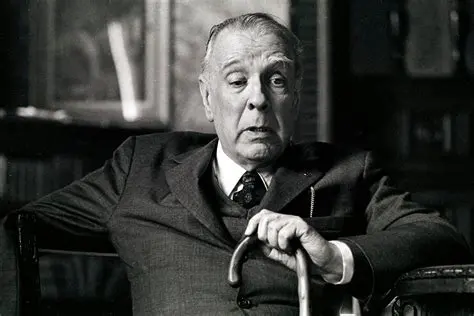-
Using Literary Forgery: This is a fictional citation, claiming that the work is a quotation from “Viajes de varones prudentes”. Borges would often ask himself, and the reader, what fiction was, in this case giving a short story the form of a fragment from a much longer history. The same technique was used in The approach to Al’Mutassim.
-
Scientific Precision: That they delivered it up to the Inclemencies of Sun and Winters. An overly-precise way of saying “they left it outside and it was ruined by the weather”. It’s possible that Borges is parodying the exactitude of scientific reportage.
-
Simulacra and Simulation: Jean Baudrillard cites the short story as the “finest allegory of simulation” in his treatise Simulacra and Simulation, describing how “an aging double ends up being confused with the real thing”, covering the very thing it was meant to represent. In this way the story contributed to developing the semiotic concept of the hyperreal. (Wikipedia)
-
Map Making: Map-making has advanced rapidly alongside technology. The Mercator projection (1569) proved to be an important step forward in mapping a spherical globe onto a flat map, while satellite imagery (first used in 1946) meant that the world could be mapped from a perspective outside of itself. Satellite mapping has reached a remarkable level of progress. With, for example, Google Maps, we’ve reached a stage where it’s hard to imagine any more detail on our maps without them becoming extremely close to real life– as Borges’s map becomes. (Genius)
-
In a way, this foreshadows our own obsession with virtuality paralleling reality: increasingly we want pictures of everything, not just descriptions, so that the lines between being and representation of being become increasingly blurred. There is an argument to be made so as to link this to hyperrealiatic art. The next map would actually be a cake.
-
This story is so short that it can easily fit onto a small image with the text nice and readable. But then, is the image a point for point map of the story? Or is the story a map of the image?
-
In the Deserts of the West, still today, there are Tattered Ruins of that Map. A powerful image: the life-sized map is in pieces throughout the deserts, its reality broken into small pieces.
Jean Baudrillard would make it even more potent, though, by flip-reversing the whole thing:
It is nevertheless the map that precedes the territory – precession of simulacra – that engenders the territory, and if one must return to the fable, today it is the territory whose shreds slowly rot across the extent of the map.
Simulacra and Simulation, p.4
Baudrillard’s contention was that the Map still existed, and that was what we now called reality, even though, ontologically speaking, it is merely a copy of reality. Reality itself exists in tatters throughout the map.
Baudrillard continues:
It is the real, and not the map, whose vestiges persist here and there in the deserts that are no longer those of the Empire, but ours. The desert of the real itself.
This was the inspiration for The Matrix, and its virtual-reality created by machines. (Tho the matrix a weak metaphor, it’s a better metaphor for the cave in Platos works).
- I will be adding further links to analysis of this story.


Thanks for the analysis, I wasn’t sure what the sentence about inclemencies meant